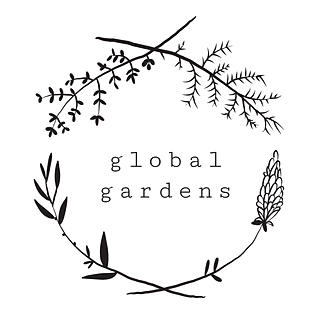VISIT TO FLAXLAND
- Global Gardens
- Nov 15, 2021
- 2 min read
Last Wednesday some of the regulars from the Making and Mending workshop set off from Global Gardens on a trip to Gloucester in search of some expertise to help us process the flax we’ve been growing and harvesting at the gardens.
We travelled to Stroud to meet Simon Cooper at his fascinating Flaxlands workshop. (@flaxlanduk ) Set along a picturesque canal, the wooden cabin was stuffed full of spinning wheels, bobbins and threads that belonged to a different time. We couldn’t wait to explore and experiment.

Setting off with our harvest of flax.
A man with a passion for sustainability Simon started the day by telling us how he became interested in flax, how he built his own coracle and became intrigued with the idea of ‘growing’ his own boat using the fibres of flax.

Simon then gave us a brief history of flax, flax and linseed are members of the same family, Linum usitatissimum. They are both ancient plants used for thousands of years. Flax has been used most commonly in the linen industry. Irish Linen was world famous but is an industry that has now pretty much disappeared, possibly due to the influx of cotton.
Outside, we had some growing tips, from planting and weeding to pulling up and ‘retting’ (leaving the plant outside so the fibre rots from the stem).

Simon shows us how to sow the flax seeds
We then had a go at ‘breaking’ the flax, using ancient tools to separate the flax from the core. Once broken, we then scraped it and combed it to get rid of the ‘shive’ (waste). The flax at this point resembled golden hair, and we were reminded of the story of Rumpelstiltskin.

Poppy beating the flax to remove the shive
After lunch we watched a film about how flax is produced on an industrial scale in France and how it goes on to become haute couture. The passion of everyone who worked with the flax was evident from growing to weaving to making up the gorgeous high fashion pieces. We all had a go at the slightly more complicated process of dressing the distaff, a medieval looking cone that makes it easier to spin the flax. Simon as always made it look simple but we could have spent a few more hours practicing this bit!

Concentrating on the distaff
We finished up by twisting some flax into a simple twine and felt a real sense of accomplishment that we had started the day with a bunch of dried grass and ended it with something really quite beautiful.

Garden twine
We returned to Cardiff inspired, completely in love with linen and determined to take the flax project further, hopefully at some point making a garment of our own!













beach resorts near Barcelona Discover the ultimate getaway where sun, sand, and luxury meet. From serene coastal escapes to vibrant seaside experiences, these resorts offer unforgettable stays, perfect for relaxation, adventure, and making lifelong memories on Spain’s stunning shores.